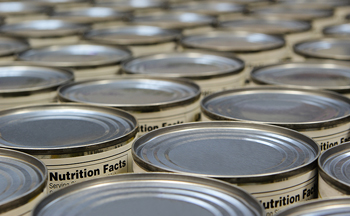OEHHA Proposes Amendments to Prop. 65 Reproductive Toxicity Sampling Requirements for Food Products; New Prop. 65 Regulations for PFAS Take Effect November 10, 2018
November 2, 2018
Last month, the Office of Environmental Health Hazard Assessment (OEHHA) proposed amendments to clarify Proposition 65 reproductive toxicity sampling requirements for food products. California’s Proposition 65, also known as the Safe Drinking Water and Toxic Enforcement Act of 1986—or “Prop 65”—prohibits businesses from releasing chemicals “known to the state to cause cancer or reproductive toxicity,” and from exposing people to chemicals on the Prop 65 List without providing “clear and reasonable” warnings. OEHHA’s proposed amendments to Title 27, Cal. Code of Regulations, Section 25821, subsections (a) and (c)(2), would change how Prop 65 reproductive toxicity sampling for food products must be taken and calculated.
OEHHA’s proposed amendment to Section 25821, subsection (a) would clarify that where a business presents evidence for the “level in question” of a chemical on the Prop 65 List as causing reproductive toxicity in a food product based on the average of multiple samples of the food product, the level in question may not be calculated by averaging the concentration of the chemical in the food product from different manufacturers or producers of the food product, or that were manufactured in different facilities from the product at issue. OEHHA’s proposed amendment to Section 25821, subsection (c)(2) is intended to clarify how a business should calculate exposures to listed reproductive toxicants and specifies the use of the arithmetic mean as the metric to be used when calculating the rate of intake or exposure for users of the consumer product. Notably, until now, there has been flexibility for businesses to use the arithmetic or geometric mean; however, this proposal removes that discretion in favor of what, in most cases, will be a more stringent value under the arithmetic mean approach. For example, in the Environmental Law Foundation v. Beech-Nut Nutrition Corp., et al. case, the defendants successfully argued that their products would not cause an exposure to lead above the safe harbor level set for lead. The defendants’ expert, in that case, used the geometric mean to determine the rate of intake or exposure for those consuming the defendants’ products. Had the defendants’ experts been forced to use the arithmetic mean, as OEHHA’s change to the regulation would require, the result might be very different.
Both of these changes are likely to be controversial and could have real impacts on many businesses, including food producers and others in the food industry. In fact, OEHHA has already extended the original comment period on these proposed changes until Monday, November 26, 2018, giving industry an additional week to provide comments.
PFAS Warning Requirement Effective on November 10, 2018
Separately, on November 10, 2018, businesses will be required to provide Prop 65 warnings for products causing exposure to PFOA (perfluorooctanoic acid) and PFOS (perflurooctane sulfonic acid), which are two widely known PFAS compounds. PFAS (per- and polyfluoroalkyl substances) are man-made compounds that have recently been identified from several authorities as causing adverse health effects such as reproductive toxicity and cancer. PFAS properties make the compounds highly resistant to heat, water, and other chemical breakdowns. As a result, product manufacturers have used PFAS for decades in a variety of products including carpets, furniture, and food packaging to help make the products waterproof or fire-resistant. PFAS are also widely used in fire retardants and other industrial processes.
OEHHA added PFOA and PFOS to the Prop 65 List as causing reproductive toxicity on November 10, 2017. Once OEHHA places a chemical on the Prop 65 List, businesses have one year to comply with the Prop 65 warning requirements. According to the United States Environmental Protection Agency, although PFOA and PFOS are no longer manufactured in the United States, they are still produced internationally and can be imported into the United States in various consumer goods. Thus, businesses should be aware that starting November 10, 2018, they might have an obligation to provide Prop 65 warnings for PFOA or PFOS for their products sold in California unless they have determined that their products cause an exposure below the safe harbor level. Businesses could face potential Prop 65 enforcement actions for a failure to warn for PFOA and PFOS in products after November 10.
For assistance in complying with Prop 65, please contact us.

